What is a Creative Media Matrix?
The Creative Media Matrix is a structure that helps visualize or navigate creative assets across key dimensions. The matrix rows represent creative assets (e.g., image, video, or text ad) while the columns are one of many audience segments or demographics. Additionally, the intersections of this matrix are filled with key performance metrics (e.g., click-through rates [CTR], conversion rate, engagement %, and acquisition cost). Marketers can use this framework to observe how any piece of creative performs among or against different segmentations, leading to options for optimization.
Components of a Creative Matrix
A well-structured Creative Media Matrix not only organizes and examines creative assets across various audiences and advertising channels but also allows for the inclusion of additional relevant data, ensuring a comprehensive analysis that can guide future campaign strategies.
Creative Asset-Related Data
When sourcing creatives, every detail must be carefully considered, especially regarding where the ads will be placed. Different platforms like TikTok, Instagram, Google, or LinkedIn, have unique requirements and audience behaviors, making it essential to tailor your creative assets accordingly. By adding columns to your Creative Media Matrix for specific ad placements within these platforms, such as Stories, Feeds, or In-Stream videos, you can ensure that each creative is optimized for its designated spot.
This approach prevents common errors, like mismatched formats or inappropriate content for a particular placement, which can undermine the ad’s effectiveness. For example, a creative designed for TikTok’s vertical video format might need a completely different approach if it’s intended for Instagram’s carousel ads. This meticulous planning ensures that your campaigns are aligned with best practices for each platform, maximizing engagement and delivering the right message to the right audience in the most effective way.”
Types of Assets
- Assets: Text Ads, GIFs, Image Ads, Video Ads
- Placements: Search Network, Display Network, YouTube
- Assets: Image Ads, Carousel Ads, Message Ads
- Placements: Feed, InMail, Right Rail
TikTok
- Assets: Video Ads, Branded Challenges, TopView Ads
- Placements: For You Page, TopView, Branded Effects
- Assets: Image Ads, Carousel Ads, Video Ads
- Placements: Feed, Stories, Reels
By dissecting performance data, you can identify nuanced patterns that reveal how specific creative elements perform within various contexts. For example, a carousel ad that excels in engaging users on LinkedIn’s feed may not have the same impact on Instagram Stories, highlighting the need for tailored approaches. Furthermore, understanding these dynamics allows for precise audience segmentation and asset optimization, ensuring that creative strategies are aligned with platform-specific behaviors and user expectations.
Analyzing asset types and their placements not only provides actionable insights into which asset types and placements drive optimal results but also facilitates a more strategic allocation of resources. By leveraging these insights, you can refine your creative approach, enhance targeting accuracy, and improve overall campaign efficiency, ultimately driving higher returns on investment and more effective marketing outcomes.
Copy & Creatives
What are some main copy and creative variables that we tend to examine on a Creative Matrix?
Examining the Main Copy involves assessing how different versions of the text perform across platforms and audience segments, using metrics such as click-through rates, conversion rates, and engagement levels. This helps identify which messaging resonates most effectively, allowing you to tailor strategies for different platforms. For example, a call-to-action might perform better on LinkedIn but less so on Facebook, guiding you to adjust your messaging accordingly by channel or even by placement type.
Variants of the main copy are compared to determine which version drives higher engagement or conversions. By identifying the top-performing variants, you can focus on scaling successful messages and discarding less effective ones, thereby enhancing overall campaign performance.
Formats such as video, carousel, or static images as mentioned in the previous section, are analyzed to see how they perform in terms of engagement and conversion rates across different platforms or even ad placements. This analysis aids in selecting the most effective format for each platform. For instance, if video ads outperform static images on TikTok, prioritizing video formats for TikTok campaigns ensures better engagement and higher returns on investment.
Tracking Creative Names helps monitor and compare performance metrics associated with different assets. Effective naming conventions facilitate easier tracking and analysis, enabling quick identification of top-performing assets and replication of successful elements across campaigns.
Reviewing Asset URLs ensures that creatives are linked correctly and performance is accurately measured. This prevents misreporting and maintains data integrity, ensuring that each creative is properly attributed.
The Tone of an ad, whether empathetic, informative, or another style is analyzed to see how it impacts engagement and conversions across different audience segments. Understanding which tone resonates with specific demographics enables more effective personalization. For example, an empathetic tone might engage younger audiences on social media more effectively, while a more informative tone could be better suited for professional audiences on LinkedIn.
Analyzing the Hook of an ad—such as shocking facts or humorous elements—reveals which hooks capture attention and drive interaction. This helps in crafting compelling ads that increase engagement. For instance, a humorous hook might perform well on Instagram but not on Twitter, guiding you to tailor your hooks to platform-specific behaviors.
Content Buckets (or Content Pillars), or categories like seasonal promotions or customer stories, are reviewed to understand which themes resonate most with your audience. This helps in planning content strategies based on what drives higher engagement during specific times of the year or for particular audience segments.
For example, for NoGood, we use the following Content Buckets or Content Pillars when planning our content strategy:
- Client Success Stories: Where we showcase successful campaigns across various marketing channels, highlight client testimonials, and more.
- Marketing Insights: A pillar where we focus on educating our audience with tips, best practices, and trends in the broader marketing landscape.
- Agency Life: Photos and stories featuring our team behind the scenes, showing the collaboration across departments, brainstorming sessions, and more.
- Industry Inspiration: Where we highlight emerging trends, inspiring marketing concepts, and fresh ideas that influence not our holistic approach to marketing strategies.
- Service Highlights: The bucket where we promote our core services, from multi-channel performance marketing to data analytics, explain our unique offerings.
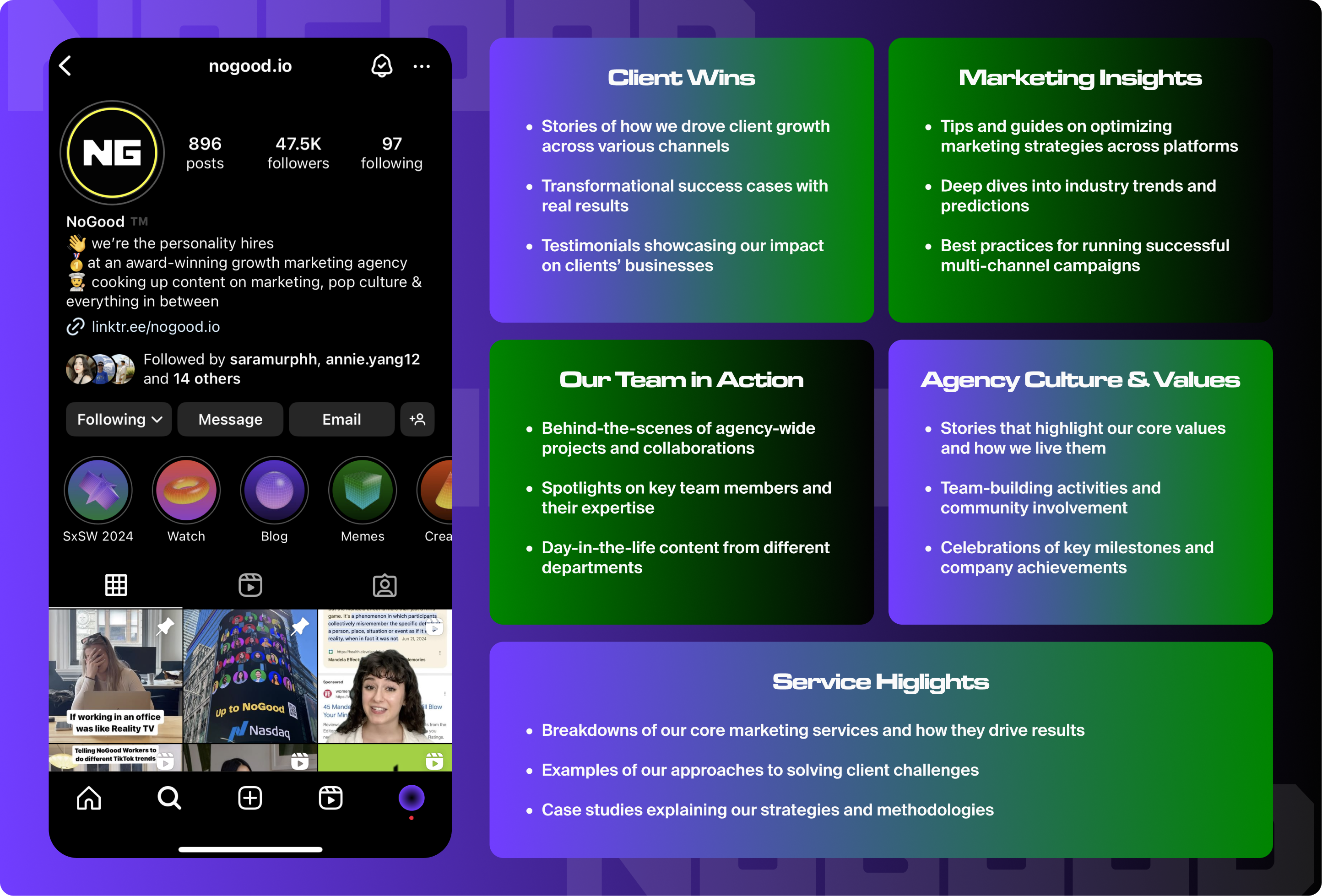
Finally, examining the Edit Style/Visual Description of ads—whether dynamic editing, aesthetic visuals, or specific visual elements like product close-ups—allows you to see which styles are most effective on each platform and for different audiences. For instance, dynamic editing might boost engagement on YouTube, while clean visuals may perform better on Instagram.
By analyzing these variables separately, you gain a granular understanding of how each element influences performance, allowing for precise optimizations and strategic adjustments. This comprehensive analysis leads to more effective campaigns tailored to audience preferences and platform norms.
Audience Asset-Related Data
Including audience asset information in your matrix is extremely important to ensure you create the perfect creative for specific audiences. Knowing who your target is—and isn’t—will shape the creatives and messaging that speak to specific demographics, psychographics, and behaviors. Whether you’re focusing on a younger audience or a more mature one, the creative elements should reflect the preferences and characteristics of the targeted group. Being precise with attributes like age, gender, income, and education allows for more personalized and impactful campaigns.
Demographics
- Age: Focusing on a certain age range (e.g., 18–24, or 25–34) allows you to produce content that resonates particularly well with the unique interests and challenges experienced in these life stages. Younger audiences are more attracted to vibrant and fast content, while older ones may be inclined toward informative, direct messaging, or you might find the opposite with creative experimentation.
- Gender: Dedicated creatives based on gender allow you to speak to the unique preferences and needs of males, females, or non-binary individuals. Gender-specific content can improve relevance and user engagement.
- Income Level: Distinguishing between creatives that speak to different income groups ensures you are communicating in the financial language of your audience. This way, value propositions in your ads will align with the buying power and lifestyle of potential leads.
- Education: Focusing on education segments (e.g., high school, college, or graduate) helps build a message that speaks more to the knowledge base, values, and goals of your audience. This is especially important in industries where education correlates with the relevance of your product or service.
Psychographics
- Interests: Ensure your creatives resonate with the interests of the audience (e.g., sports, technology).
- Values: Targeting values related to your brand’s mission (e.g., sustainability, innovation) allows people to connect with your brand on a deeper, emotional level. Testing value propositions on creatives is essential because it helps determine which messaging resonates most effectively with your target audience. By experimenting with different value propositions, you can identify the specific benefits or solutions that drive engagement, conversions, and customer loyalty.
- Lifestyle Choices: Modifying creatives to fit specific lifestyle segments (e.g., health-conscious vs. luxury-focused) ensures your messaging aligns with your audience’s daily lives and aspirations.
Behavioral Segments
- Online Behavior: Personalizing creatives based on users’ browsing and purchase behavior (e.g., frequent shoppers, and first-time visitors) increases message relevance and impact. For instance, retargeting ads can help convert those who viewed a product but didn’t purchase it.
- Engagement Levels: Differentiating creatives for highly engaged users versus less active ones allows you to tailor your messaging to the level of engagement within your audience, maximizing content effectiveness. Highly engaged users may appreciate more detailed content, while casual viewers might respond better to simple and direct messaging.
- Purchase History: Customizing creatives for repeat customers or cart abandoners can enhance engagement and conversions.
Geographic Segments
- Location: Targeting creatives by location (city, region, or country) helps make your content more relevant, increasing its effectiveness. Localized content can include cultural references, regional dialects, and seasonal trends, making your creative more relatable and engaging.
- Cultural Relevance: Tailoring creatives to fit the cultural norms and preferences of different regions increases the relevance of your brand to a diverse audience. Demonstrating sensitivity to and appreciation for the cultural context of your audience can significantly improve brand perception and connection.
Analysis & Visualization of Creative Matrice’s Data
When evaluating the effectiveness of creative assets within a Creative Media Matrix, several methods are commonly used to gather insights and optimize performance. Below are some of the most widely used techniques:
Performance Segmentation
This involves breaking up creative assets into different elements to determine where each creative performs well and how it integrates with various categories. Segmenting performance data enables marketers to see which creative variations are most effective and for whom, or on what platforms. This is especially helpful for optimizing creatives by different audience groups.
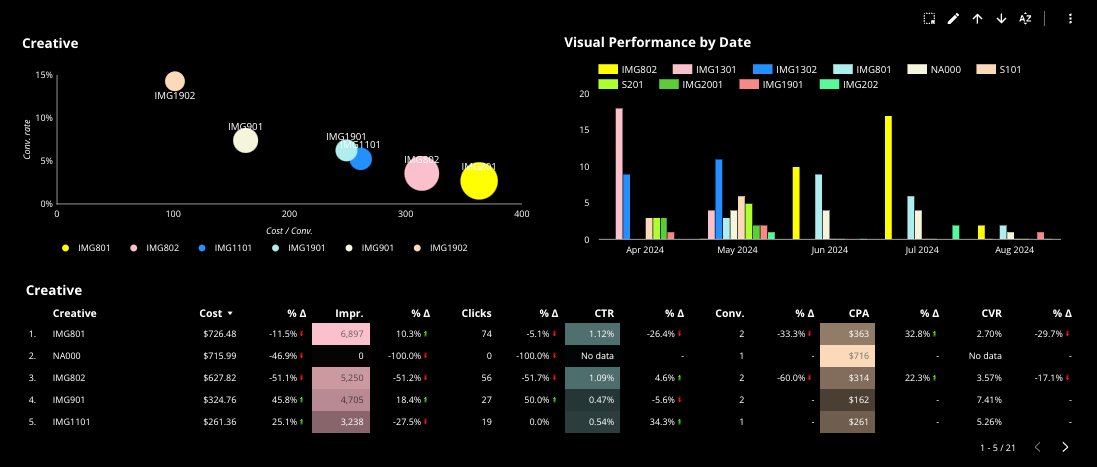
Heatmapping
Heatmapping is a visual analysis process that shows where users are clicking more within a creative asset. This way, you can identify which areas of your image, video, or webpage are most captivating. Heatmaps are particularly valuable in video ads, landing pages, or interactive content, helping marketers pinpoint the most engaging elements of a creative.

Conversion Rate Analysis
Conversion rate analysis measures how well a creative asset drives users to take action, like making a purchase or subscribing. By comparing conversion rates for different creatives, you can determine which assets are best at converting viewers into customers. This method focuses on the end goal of the creative, making it crucial for performance-oriented campaigns.
Sentiment Analysis
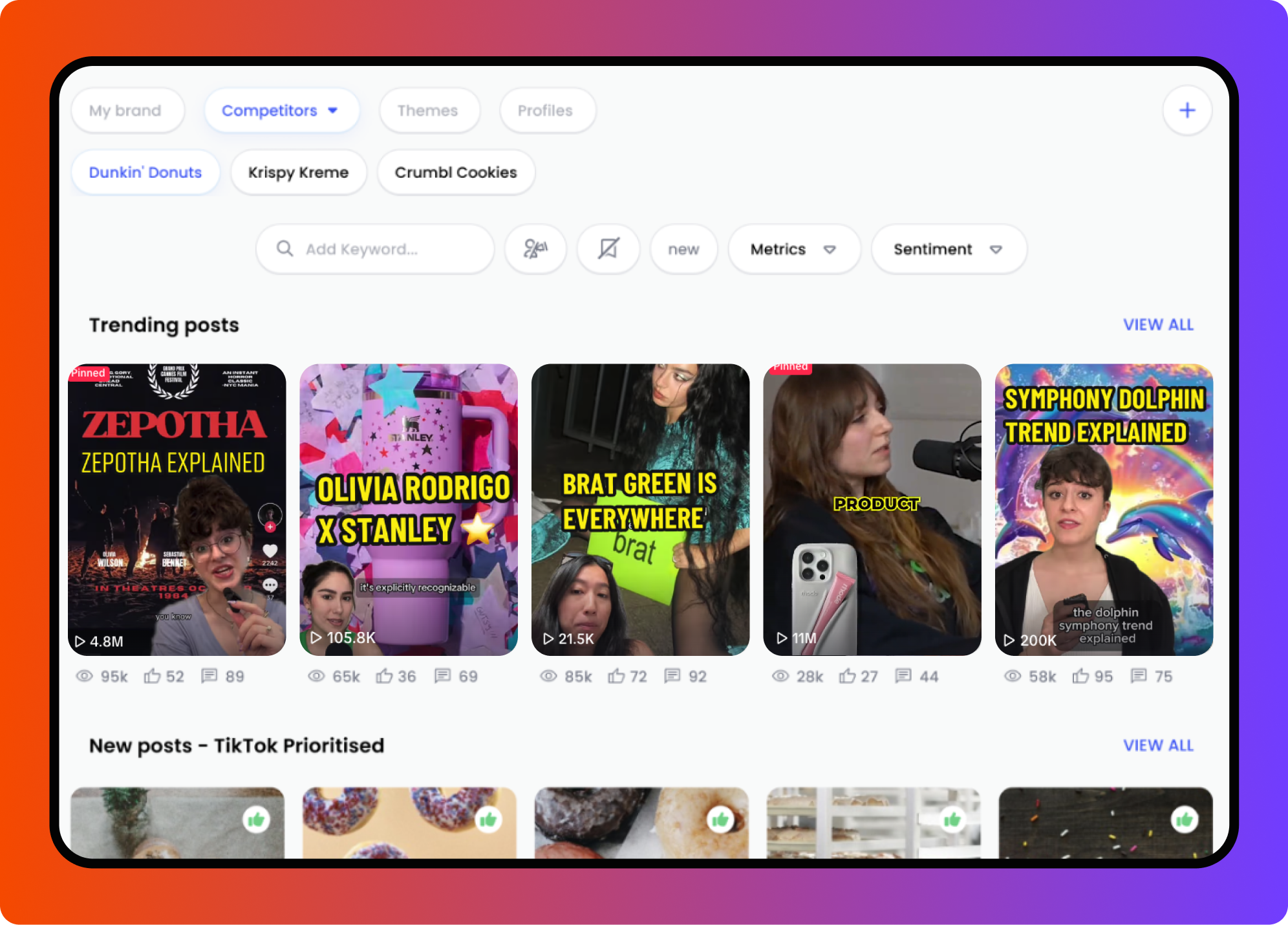
Sentiment analysis involves analyzing user feedback and social media comments to gauge the emotional response to a creative asset. This process gives marketers insights into how their audience feels about the creative—whether the response is positive, negative, or neutral. Sentiment analysis is particularly effective for brand campaigns where the emotional resonance of a creative is a key performance indicator.
- Time Spent Analysis
Time spent analysis calculates how much time users spend watching a video or interacting with an creative. The longer an audience stays engaged, the more interesting and engaging the creative is. This metric is valuable for content that requires more in-depth interaction, as longer engagement times typically indicate higher interest.
- ROI Attribution
ROI attribution assigns a return on investment (ROI) to specific creative assets, showing how much revenue marketers are getting for their investment. This method allows companies to determine the financial impact of their creative efforts and direct resources toward higher-return assets.
When to Use a Creative Media Matrix
A Creative Media Matrix works best for creatives if you have to prove yourselves with a structured and data-driven approach. Here’s when and why to use this framework:
1. Comparative Analysis
When you must visually compare how creative performs in various audience segments, a Creative Media Matrix is priceless. Putting all creatives beside KPIs allows marketers to spot top and low-performing assets very fast. Having this comparative view is critical for you to catch trends, outliers, and patterns in creative performance so that you can determine from there how your campaigns should be adjusted. By having a robust Creative Media Matrix system in place for each of your clients, you can quickly spot high-performing creatives through detailed analysis, whether using a spreadsheet or a visual tool like a bubble graph.
For example, if you plot Conversion Rate (CVR) on the y-axis and Cost Per Acquisition (CPA) on the x-axis, the creatives positioned closer to the top left—high CVR and low CPA—are your best performers. Once you’ve identified these top-performing creatives, the next step is to analyze the specific elements that led to their success. This could involve examining the color scheme, design, the use of male or female models, or the ad copy, depending on the variations that were tested. By understanding these key elements, you can determine what resonates most with your audience and come up with insights that will lead you to campaign optimizations and additional design testing.
To adjust the campaign, you would double down on these winning creatives, incorporating the successful elements into new variations that we just discussed above. This approach allows for continued iteration and testing, refining the campaign to enhance performance further.
For example, if a particular color scheme or design consistently performs well, you can use it more broadly across other creatives. Similarly, if a specific ad copy or imagery resonates more with a certain audience segment, you can tailor future creatives to leverage these insights. This method ensures that your campaign remains dynamic, optimizing based on real-time performance data to maximize results.
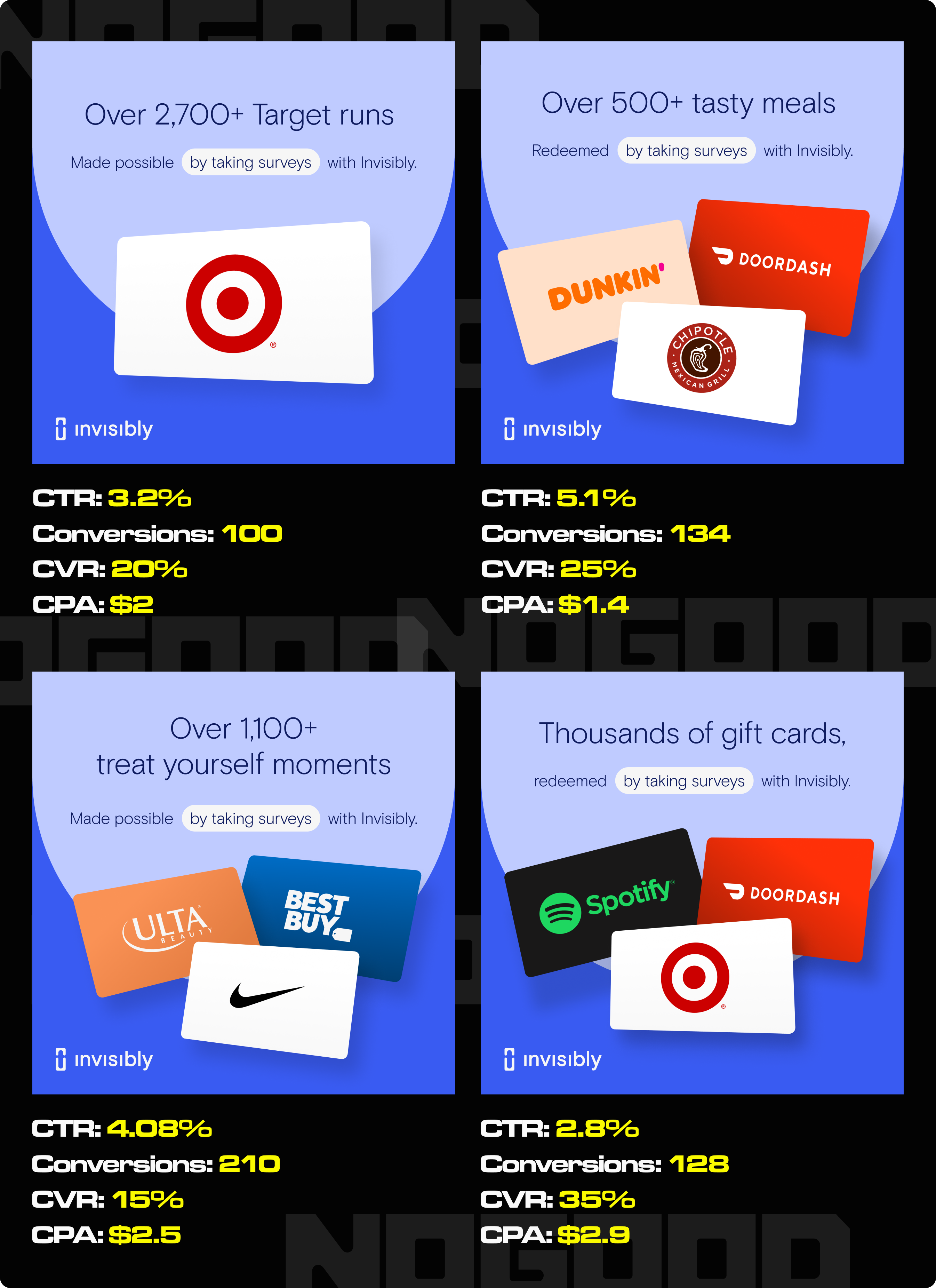
2. Resource Allocation
When you need to decide which resources to prioritize due to funds, the matrix will help highlight clear winners with high ROI. This enables you to allocate resources strategically, so your budget can go where it matters most: on producing and scaling top-performing creatives, minimizing waste in overall campaign spending.
For example in the context of Paid Social, this approach is crucial. A/B testing allows us to reallocate budgets based on the winning messaging and creatives, ensuring that we don’t waste money on low-performing assets. By identifying the best-performing creatives through A/B testing, you can focus your spending on what truly resonates with your audience, maximizing the impact of every dollar spent. By allocating more budget on the winning assets, this is where growth marketing begins, and the campaigns start scaling period over period. This not only improves campaign efficiency but also drives better overall results by focusing your efforts where they matter most.
3. Structured Hypothesis Testing
In the world of A/B testing or multivariate testing, the Creative Media Matrix enables hypothesis building and structuring. To effectively structure your Creative Media Matrix, it’s essential to start by organizing your ad naming conventions in a way that reflects the key elements you want to analyze. By adding the appropriate messaging, colors, audience segments, and other variables directly into the ad names using underscores or other delimiters, you can easily segment and filter these elements later on.
For instance, an ad name could be structured as CampaignName_Audience_Color_Message_CallToAction. This approach allows you to segment and isolate different components of your creatives using data analysis tools, enabling you to quickly determine which combinations are driving the best performance.
Once your ads are appropriately named and segmented, you can proceed to visualize and analyze the data. Heat maps can then help you understand which areas of your creatives resonate most with specific audiences, while bubble charts can plot performance metrics such as Conversion Rate (CVR) against Cost Per Acquisition (CPA) to quickly identify top-performing creatives. Pivot tables allow for a detailed breakdown of these elements by demographic or psychographic segments, revealing which strategies are most effective for different groups.
By combining a well-structured creative naming convention with powerful visualization and analysis tools, you can systematically identify which colors, messaging, and calls-to-action work best for your target audiences. This method enables faster, data-driven decision-making, ensuring that your campaign optimizations are both precise and impactful. This whole process makes decision-making more enlightened and data-oriented rather than speculative.
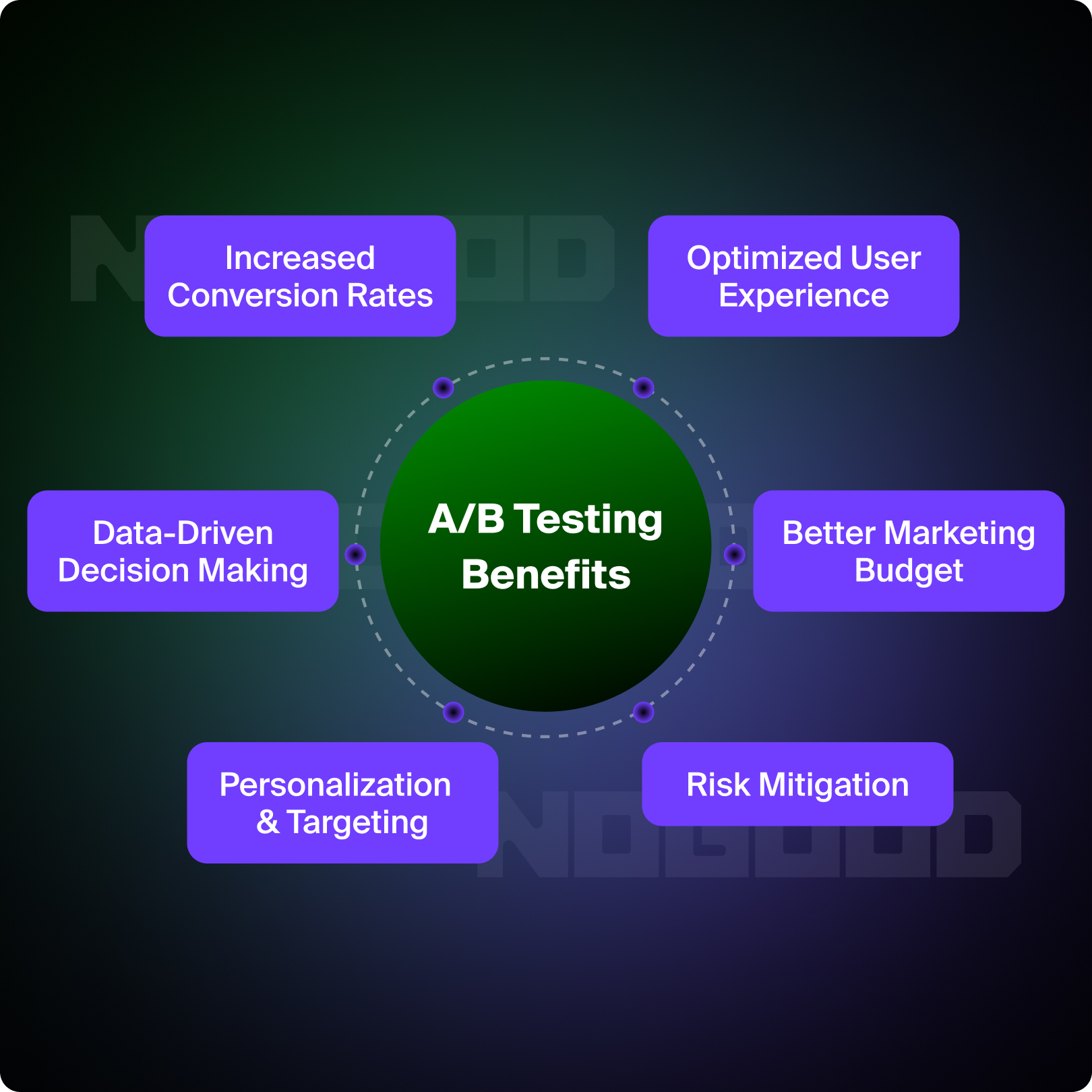
4. Personalization at Scale
To truly leverage the power of audience targeting at its current level of sophistication, a Creative Media Matrix can be instrumental in driving hyper-targeted creative content across different segments. Beyond the well-known fact that personalization leads to higher engagement and conversion rates, a Creative Media Matrix provides concrete, actionable insights that can significantly elevate your marketing strategy.
One of the core principles of effective personalization is the testing of different audiences in conjunction with tailored creatives. Instead of using the same exact creatives and messaging for everyone, a strategy that’s no longer viable in today’s highly segmented marketing landscape, you should focus on aligning creatives with the specific interests and behaviors of different audience groups.
For instance, you have a campaign targeting both fitness enthusiasts and wellness seekers. By using a Creative Media Matrix, you might discover that a specific color palette and messaging combination resonates particularly well with the fitness audience, leading to a 20% higher conversion rate among 18-24-year-olds. Meanwhile, a different creative set with a focus on calm imagery and instructional language might drive a 15% increase in engagement among the wellness segment aged 35-44.
Once these insights are uncovered, you can implement personalized ad variations tailored to these specific segments. For instance, you might run one set of ads focused on high-energy visuals and motivational copy for the fitness-focused demographic, while another set uses calming, wellness-oriented content for wellness seekers. This method ensures that your messaging is not only relevant but also deeply resonates with each audience’s unique interests and needs.
By moving away from a one-size-fits-all approach and embracing audience-specific testing, you can achieve significant improvements in campaign performance. In the example above, the creative adjustments based on matrix analysis led to a 25% overall increase in conversion rates and a 30% reduction in Cost Per Acquisition (CPA) across the campaign. This targeted approach, guided by the insights from a Creative Media Matrix, ensures that your marketing efforts are optimized for maximum impact, delivering stronger engagement and conversion rates across all audience segments.
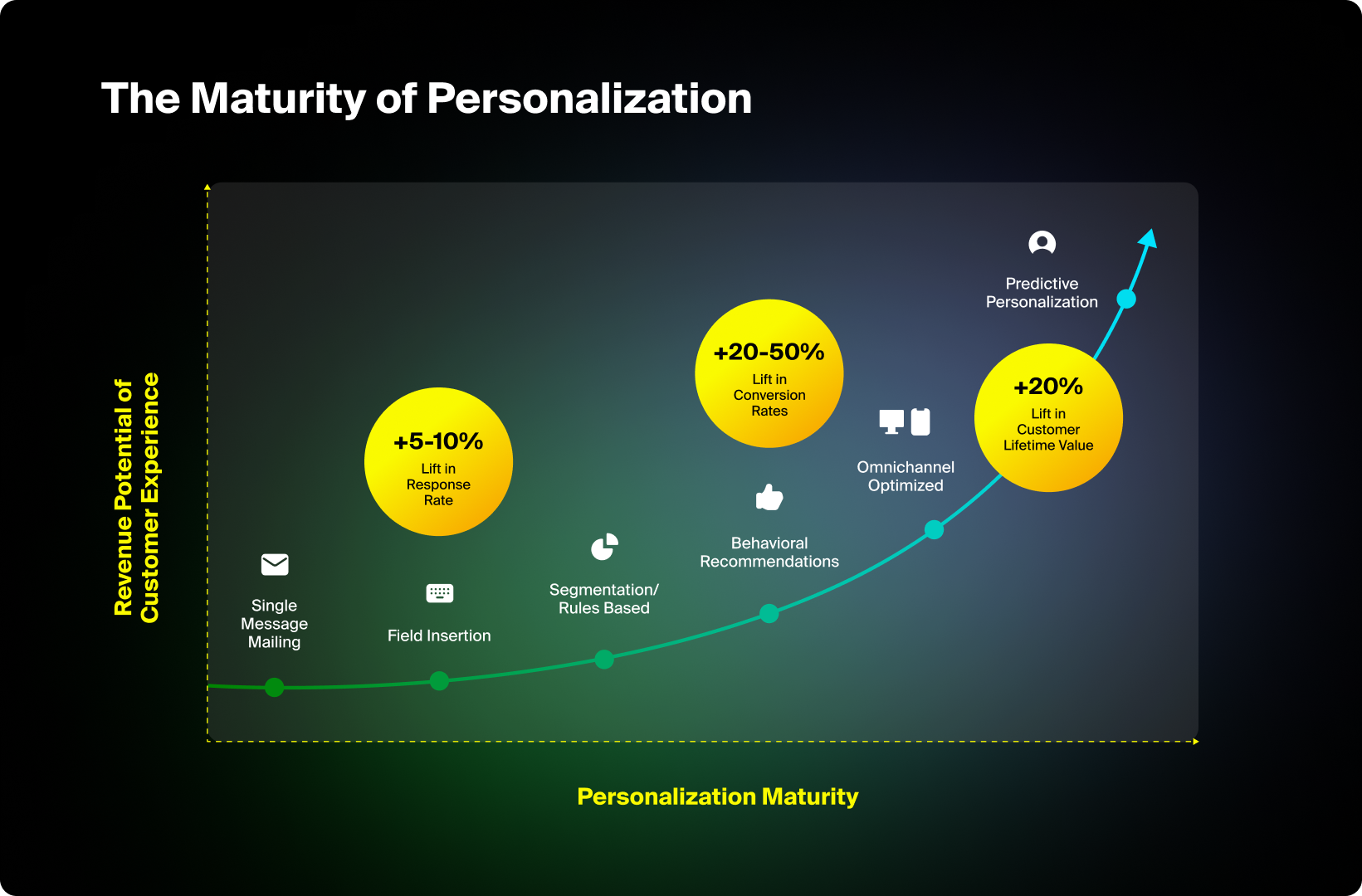
5. Feedback Loop for Creative Development
For creative and design teams, the matrix provides a structured, data-driven approach to evaluating which creative elements—such as colors, messaging, or visual styles—are resonating most effectively with the target audience. This clarity eliminates the guesswork that often accompanies creative projects, allowing the team to focus on refining and scaling the most impactful designs. By having a visual representation of what works best, the design team can streamline their process, reducing the time spent on trial and error and increasing the precision of their work. This not only enhances productivity but also ensures that the creative output is aligned with what the audience responds to, making the team’s efforts more effective and rewarding.
In addition, when creative teams can rely on empirical data rather than subjective interpretations, their work gains a level of credibility and trust within the organization. The matrix provides clear evidence of what’s driving performance, which helps to justify creative decisions and secure buy-in from other departments. Instead of relying on verbal insights or assumptions that may be misinterpreted, the team can present concrete results that guide the creative direction with confidence.
For clients, the matrix serves as a powerful tool for understanding and validating their brand strategy. During meetings, it offers a clear, visual summary of campaign performance, making it easier for clients to grasp the impact of different creative elements. This transparency builds trust in the strategy, as clients can see firsthand how their brand is being received by the target audience.
Furthermore, the matrix helps bridge the gap between a brand’s vision and audience preferences. While the brand should always have the first say in defining its identity, the feedback provided by the matrix can either confirm that the brand’s messaging is on point or highlight areas where adjustments might be needed. This ensures that the brand remains true to its core values while also adapting to what resonates with its audience, leading to a more authentic and effective branding strategy.
In summary, the Creative Media Matrix adds value by making the creative process more data-driven, streamlined, and credible, while also helping clients understand and refine their brand identity based on real audience feedback. This collaborative, evidence-based approach ultimately leads to stronger campaigns and more successful outcomes for both the creative team and the client.
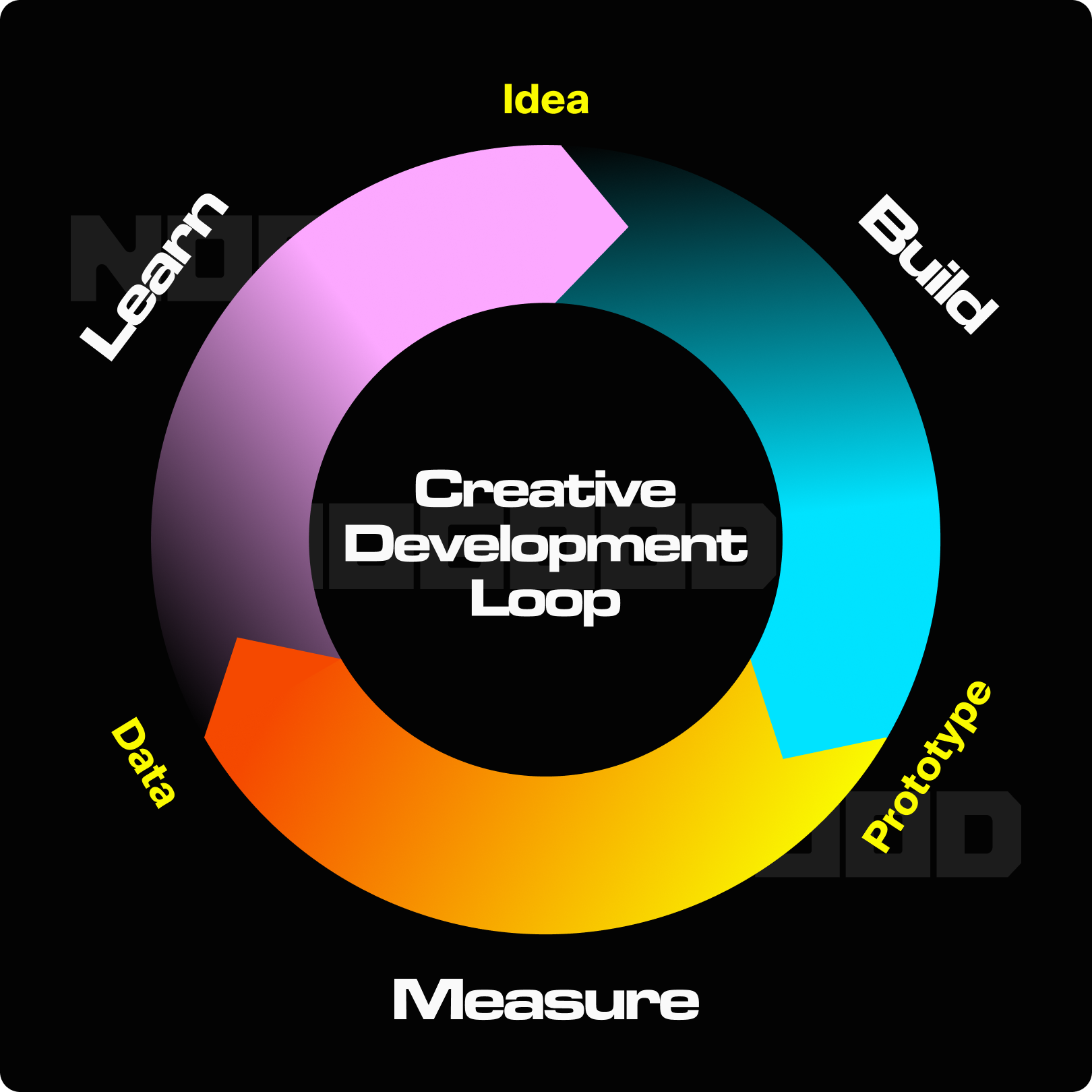
4 Tools for Automating Creative Analysis
Automating creative analysis via machines can drastically increase efficiency and accuracy, empowering marketers to quickly pinpoint top-performing assets and optimize their marketing efforts on the fly.
1. Motion

Motion is a creative analysis tool that centralizes data from all your platforms (ad platforms, analytics, etc.) under a single roof. It provides detailed insights using custom tagging, visual reports, and real-time updates. With automated analysis, Motion surfaces the best-performing ads and helps marketers quickly optimize ad campaigns and make data-driven decisions more efficiently. This platform features an easy-to-use interface and rich creative insights.
2. Alison.Ai

Alison.ai enhances creative evaluation by examining multiple factors simultaneously. Through deep machine learning, Alison.ai provides real-time performance insights and identifies optimization opportunities. The platform also offers competitive insights and intelligent recommendations, helping marketers refine their creative strategies efficiently. Alison.ai is unique in its ability to measure many aspects of creativity immediately, enabling data-driven optimizations to advertising campaigns.
3. Smartly.io

Smartly.io simplifies social media advertising using AI-powered automation for ad creation and customization. The solution offers real-time performance tracking and automated A/B testing, allowing marketers to optimize their ads quickly. Smartly.io provides a comprehensive software solution for efficiently managing and monitoring social media ads, compatible with platforms like Facebook, Instagram, and Pinterest.
3. Creatopy
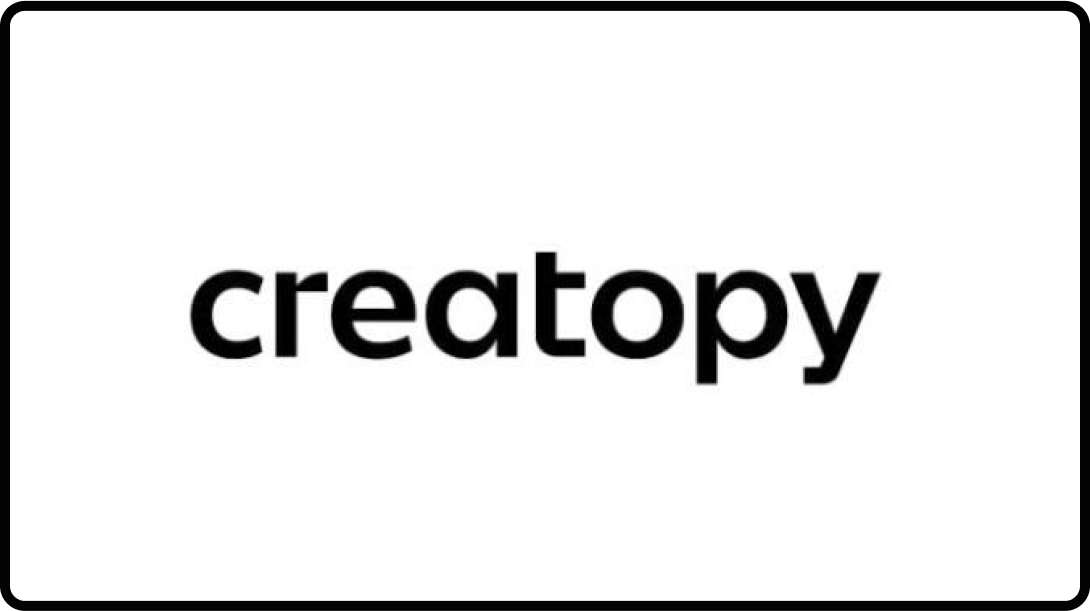
Creatopy automates media design and analysis with a library of templates and powerful design tools. It includes detailed insights to measure creative performance and is enabled by dynamic content updates. Collaboration tools and automated workflows streamline the ad creation process, making Creatopy ideal for quickly delivering fresh content.
All things considered, creativity and measurability in marketing are the be-all and end-all. The Creative Media Matrix helps marketers effectively bring both elements together, converting intuition-based strategies into data-driven insights and optimizing creative tests that are essential for paid social teams. By systematically testing and evaluating creative content, marketers can achieve higher engagement rates, better ROI, and more personalized advertising experiences for users. In this evolving advertising landscape, the Creative Media Matrix stands as a crucial tool for staying ahead, ensuring that creative strategies are not only innovative but also measurable.






